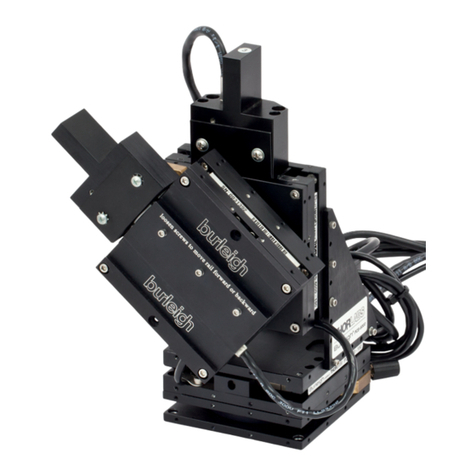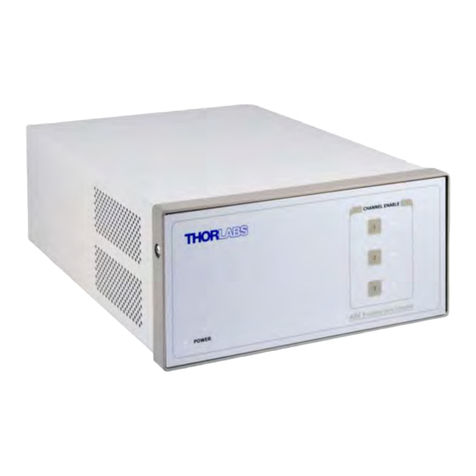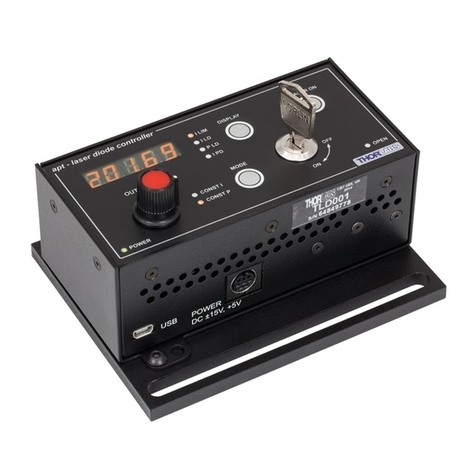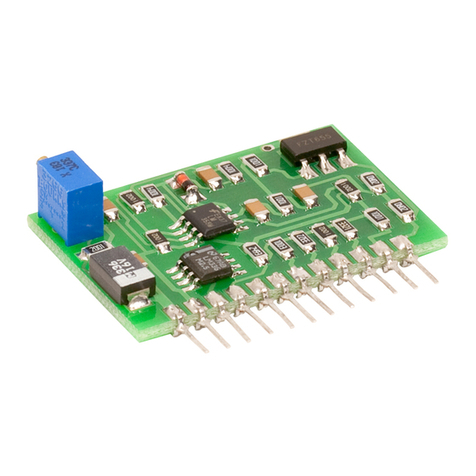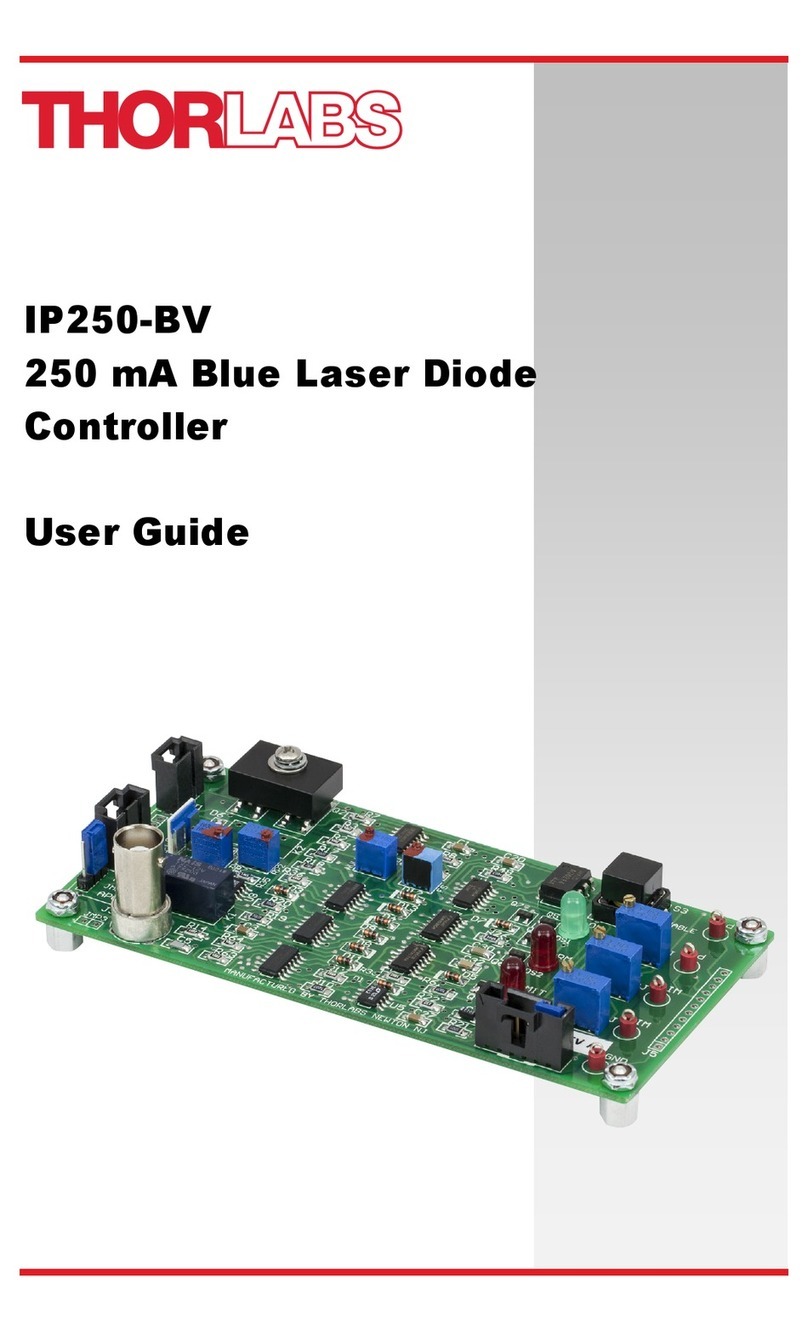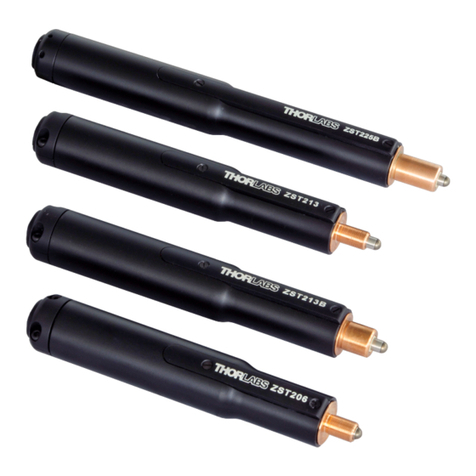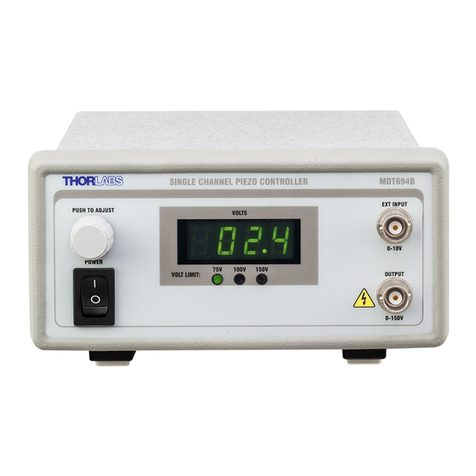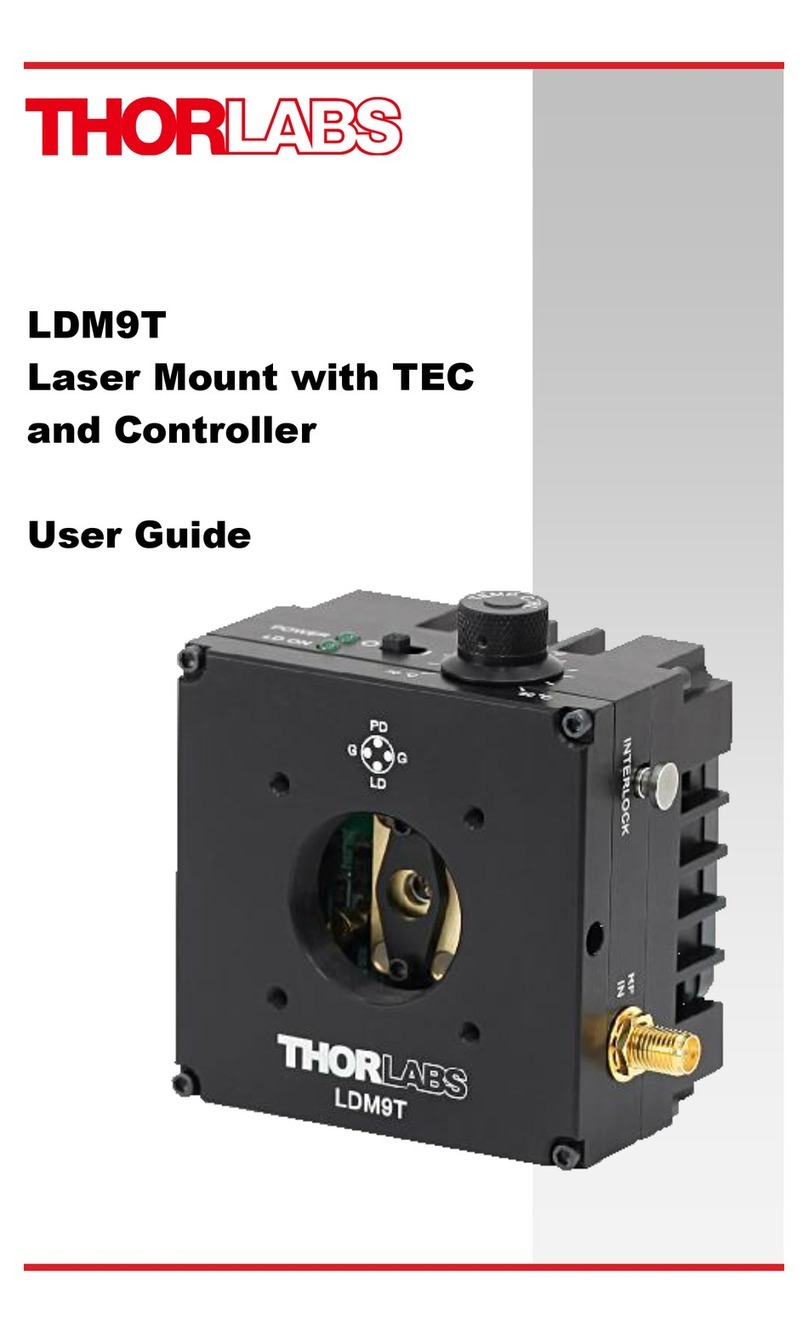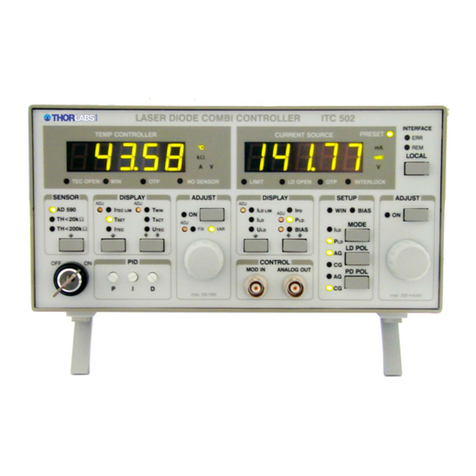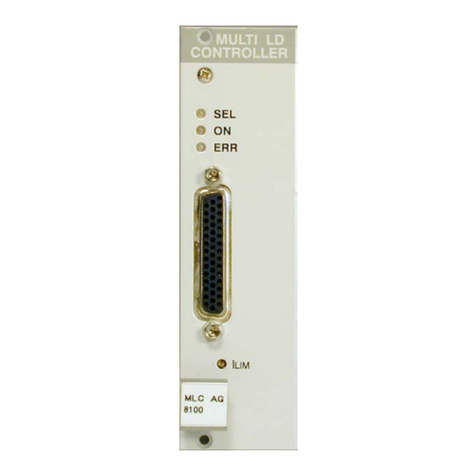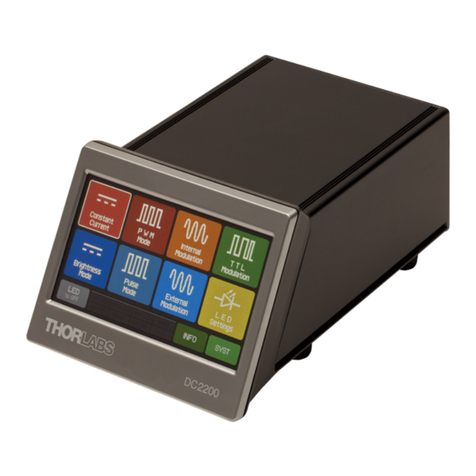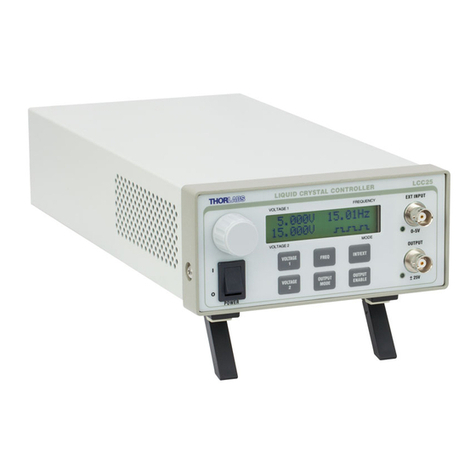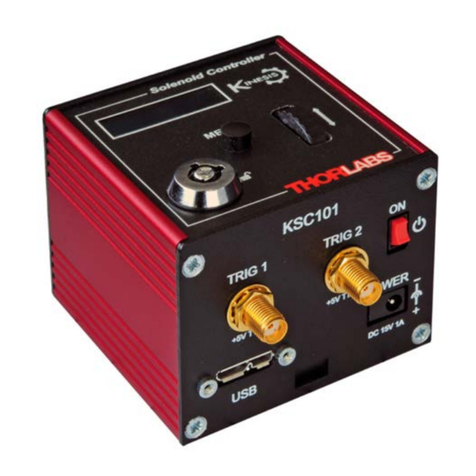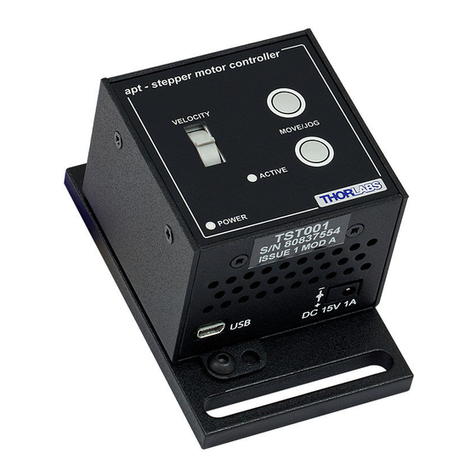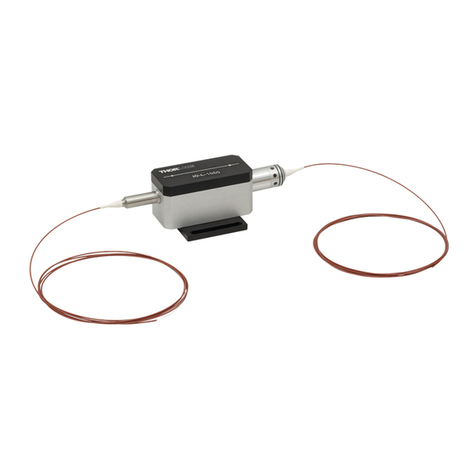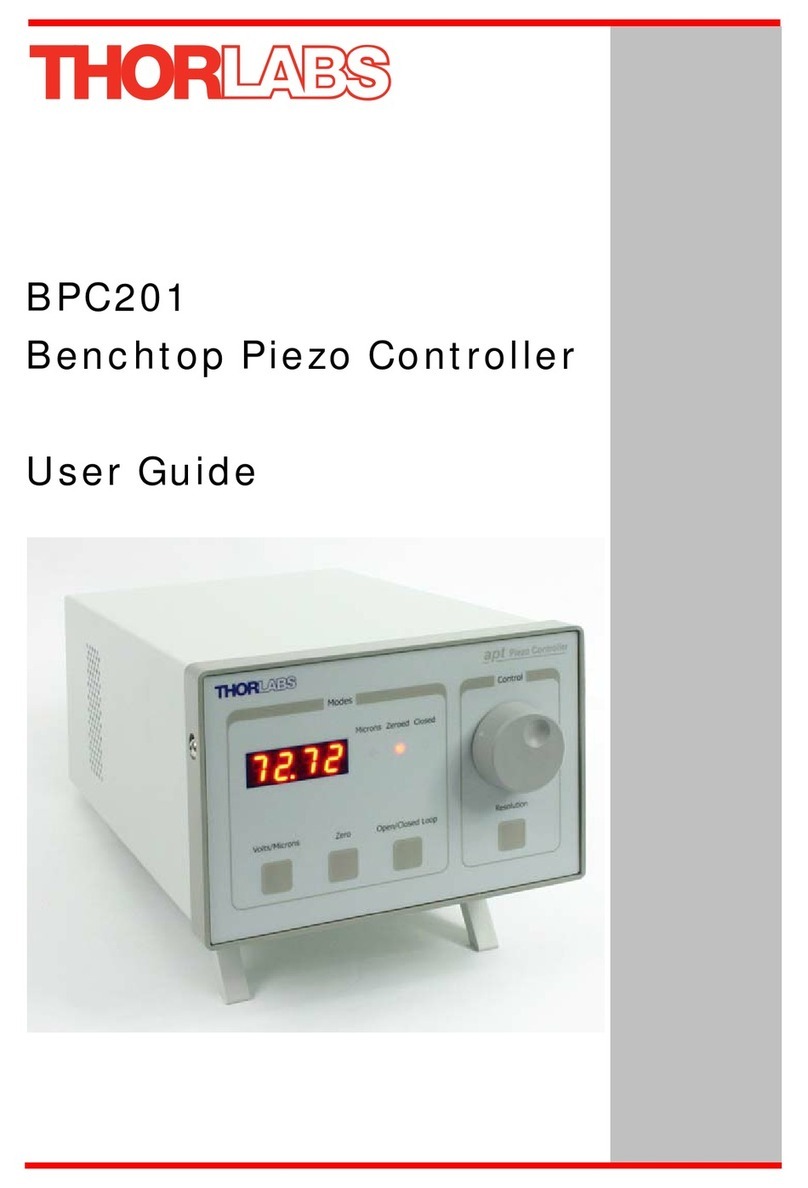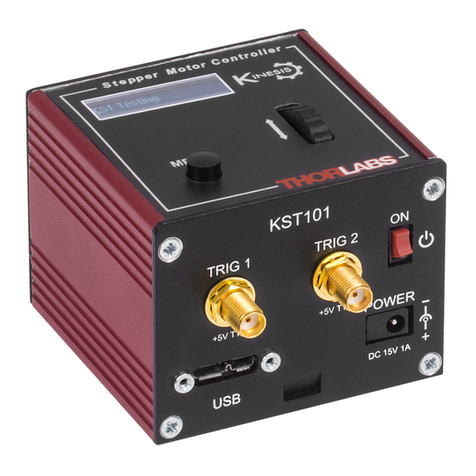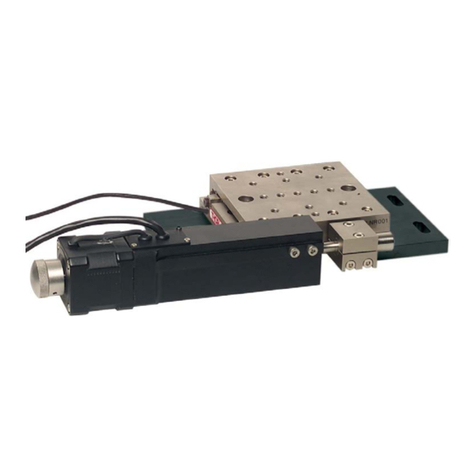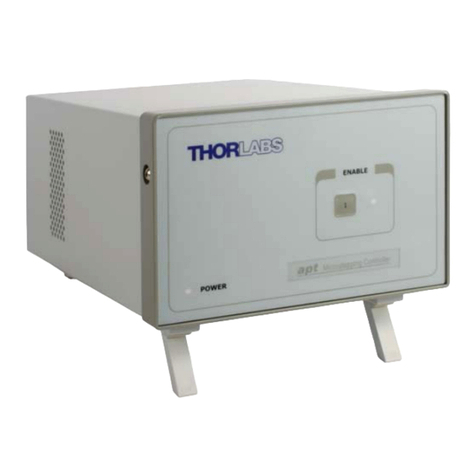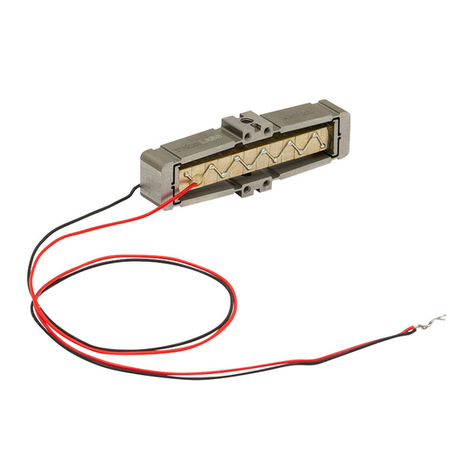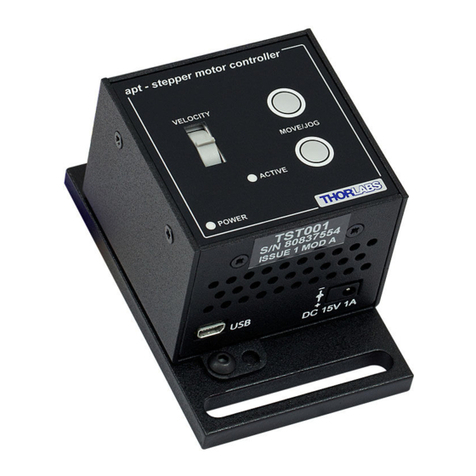
© 2015 Thorlabs6
Series 4000 SCPI Programmers Reference Manual
2 Introduction to the SCPI Language
SCPI (Standard Commands for Programmable Instruments) is an ASCII based instrument
command language designed for test and measurement instruments, based on a hierarchical
tree structure. It means associated commands are grouped together under a common node.
For example:
SOURce[1]
:CURRent
:LIMit
[:AMPLitude] {MIN|MAX|<amps>}
SOURce is the root level keyword of the command, CURRent is the second level keyword, LIMit
is the third level keyword and AMPLitude is the fourth level keyword, which can be omitted in
this case. A colon (:) separates between command levels.
For further information about SCPI please see SCPI Standard available at
www.ivifoundation.org.
2.1 Syntax Conventions
The format used in this manual for commands is illustrated below:
SOURce[1]:CURRent {MINimum|MAXimum|<amps>}
The command syntax shows most commands (and some parameters) as a mixture of upper-
and lower-case letters. The upper-case letters indicate the abbreviated spelling for the
command. For shorter program lines, you can use the abbreviated form. For better program
readability, you can send the long form. In the above example CURR and CURRent are both
acceptable syntax spellings. Other spellings like CUR or CURRe are not allowed and will generate
an error. Commands are not case sensitive.
Curly braces ({}) enclose the parameter choices for a given command string. Braces are not
sent with the command string.
A vertical bar (|) separates multiple parameter choices for a given command string. For
example, {MINimum|MAXimum|<amps>} in the above command indicates that you can specify a
numeric current parameter, or MINimum, or MAXimum. The bar is not sent with the command
string.
Triangle brackets (<>) indicate that you must specify a value for the enclosed parameter. For
example, the above syntax statement shows the <amps> parameter enclosed in triangle
brackets. The brackets are not sent with the command string. You must specify a value for the
parameter (for example 5.0) unless you select one of the other options shown in the syntax (for
example MIN).
Some parameters and even parts of the command itself are enclosed in square brackets ([]).
This indicates that the part of the command or the parameter is optional and can be omitted.
The brackets are not sent with the command string. If you do not specify a value for an optional
parameter, the instrument chooses a default value.

